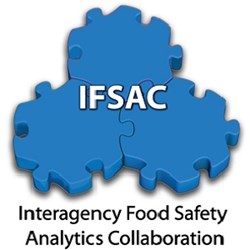IFSAC's New Method To Evaluate Foodborne Illness Sources
By Melissa Lind, contributing writer

Knowing which foodborne illnesses are most likely to occur, and in which foods, is essential in preventing future outbreaks of contamination. Three federal agencies have partnered up to develop a new method to estimate common foodborne illness sources including Campylobacter, E. coli O157, Listeria, and Salmonella.
The Interagency Food Safety Analytics Collaboration (IFSAC) — a collaboration with the Centers for Disease Control and Prevention, the Department of Agriculture Food Safety and Inspection Service, and the FDA — was initiated in 2011. IFSAC was tasked with improving the ability to identify and predict foodborne illness sources of four common pathogens.
Details of the group’s analysis and method were released on February 24, 2015 and outline the efforts taken to consolidate expertise, data, and resources. The new model was developed using data for 952 outbreaks occurring between 1998 and 2012. Analysis was conducted to align with both the FDA and the regulatory agenda with emphasis on the more-recent outbreaks.
The results of the analysis show that raw dairy and chicken were responsible for almost 75 percent of Campylobacter illnesses and more than 80 percent of the E. coli O157 strain outbreaks in dairy products and ground produced vegetables, such as spinach. Listeria contamination was also significant, being attributed to dairy products and fruit crops in 81 percent of cases.
The report indicates that the wide range of foods—beef, pork, poultry, eggs, and fresh produce — involved in Salmonella outbreaks shows that a variety of preventative measures must be taken to prevent future illness. While the report gives a good indication of the likelihood of foodborne illness sources, the group acknowledges some limitations regarding confidence in credibility. Only 36 percent of the foodborne illness outbreaks were analyzed and only 10 percent of institutional occurrences in large facilities, such as hospitals, prisons, and schools, were included.
In addition to an incomplete data pool, contaminants such as Listeria only occurred 24 times in the 15 year interval, making the team less confident in results drawn regarding that pathogen when compared to a pathogen with a larger number of outbreaks.
The aggregated data does not identify trends, but can be used as a benchmark to observe progress in food-safety improvements over time. The team has not determined how often the estimates will be updated, but plans to address that issue in future projects and may be asking for comments on the topic.
